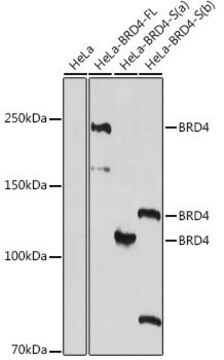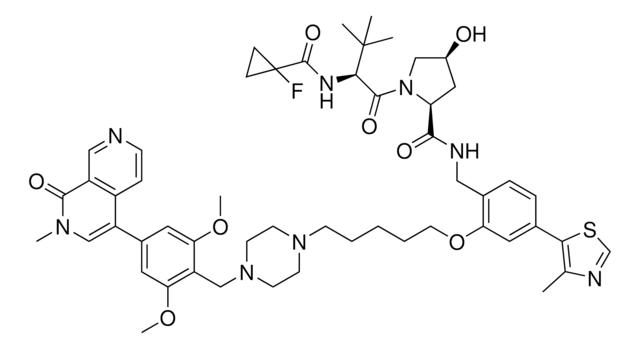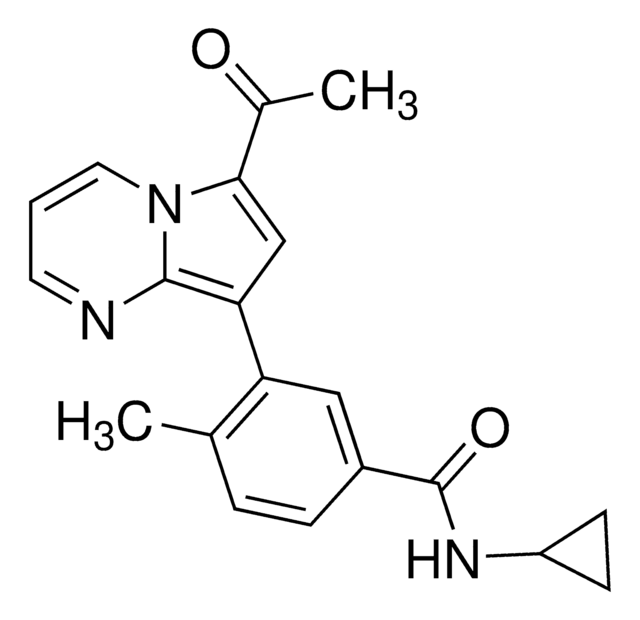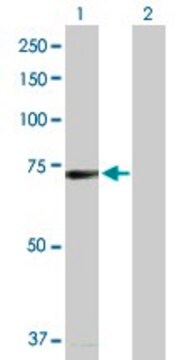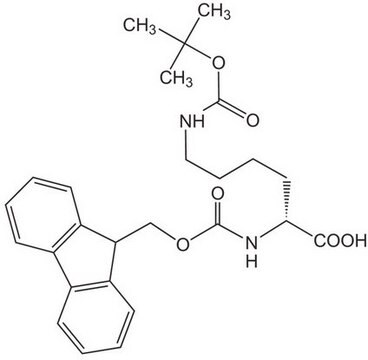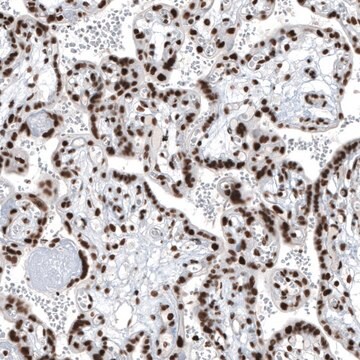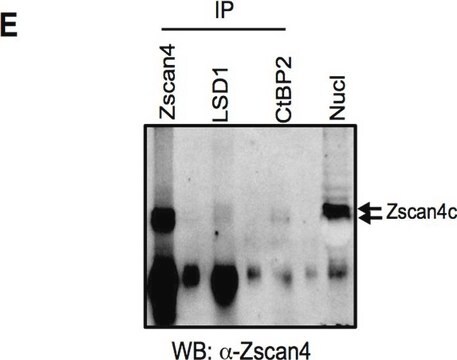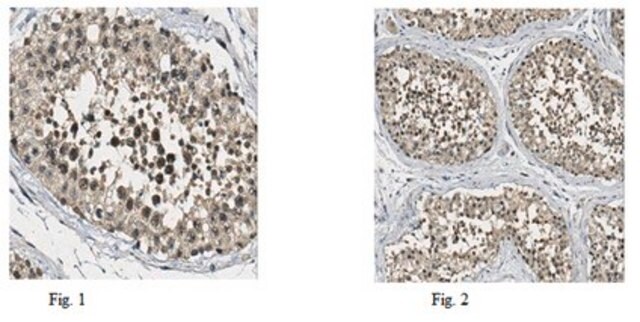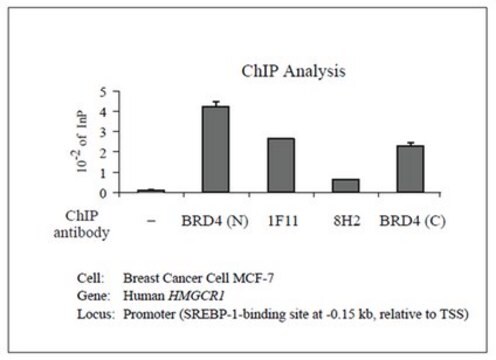ABE1391
Anti-Brd4 Antibody
serum, from rabbit
Synonym(s):
Bromodomain-containing protein 4, Mitotic chromosome-associated protein, MCAP, Brd4
About This Item
Recommended Products
biological source
rabbit
Quality Level
antibody form
serum
antibody product type
primary antibodies
clone
polyclonal
species reactivity
human
species reactivity (predicted by homology)
mouse
technique(s)
ChIP: suitable
immunocytochemistry: suitable
western blot: suitable
NCBI accession no.
UniProt accession no.
shipped in
dry ice
target post-translational modification
unmodified
Gene Information
mouse ... Brd4(57261)
General description
Specificity
Immunogen
Application
Epigenetics & Nuclear Function
Epigenetics & Nuclear Function
Chromatin Biology
Histones
Chromatin Immunoprecipitation (ChIP): A representative lot of this antibody was reported to work in ChIP using chromatin from NIH3T3 cells. See Mochizuki, K., et al. (2008) and Anup, D., et al. (2009).
Immunocytochemistry: A representative lot of this antibody was reported to work in ICC. See Anup, D., et al. (2000) and Anup, D., et al. (2009).
Quality
Western Blotting Analysis: 1:1,000 dilution of this antibody detected Brd4 in 10 µg of HEK293 cell lysate.
Target description
This antibody primarily detects 100 kd short form of Brd4 and to lesser extent larger 180 kD form (see Alsarraj J., et al. (2013 for additional details on performance of this antibody).
Physical form
Storage and Stability
Handling Recommendations: Upon receipt and prior to removing the cap, centrifuge the vial and gently mix the solution. Aliquot into microcentrifuge tubes and store at -20°C. Avoid repeated freeze/thaw cycles, which may damage IgG and affect product performance.
Other Notes
Disclaimer
Not finding the right product?
Try our Product Selector Tool.
recommended
Storage Class Code
10 - Combustible liquids
WGK
WGK 1
Certificates of Analysis (COA)
Search for Certificates of Analysis (COA) by entering the products Lot/Batch Number. Lot and Batch Numbers can be found on a product’s label following the words ‘Lot’ or ‘Batch’.
Already Own This Product?
Find documentation for the products that you have recently purchased in the Document Library.
Our team of scientists has experience in all areas of research including Life Science, Material Science, Chemical Synthesis, Chromatography, Analytical and many others.
Contact Technical Service